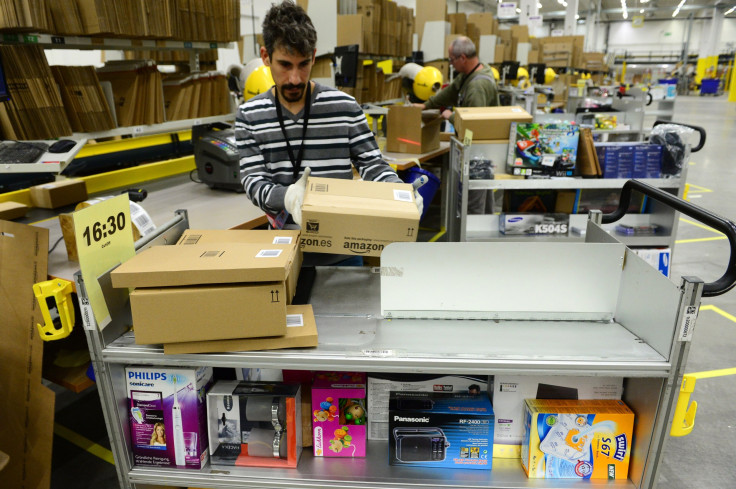As Amazon Adds Robot Workers, Retail Jobs Fall

A Quartz report said Amazon could be destroying more jobs than it generates, thanks to the addition of more robot employees.
To say that Amazon is a major employer in the world would be stating the obvious — the Jeff Bezos-owned company employs more than a million people. In fact, in the last year alone, the company added about a quarter of a million employees to its workforce.
Perhaps, the best indicator of Amazon’s significance as a bulk employer is the fact that 238 American cities are competing with each other to become home to Amazon’s second headquarters, which is expected to generate 50,000 more jobs.
That rosy picture aside, Quartz discovered, in 2017 there were a whopping 170,000 fewer retail jobs in Amazon-linked industries including grocery stores, clothing stores and bookstores, compared to the previous year.
Furthermore, Quartz made the calculation which revealed even if the e-commerce giant were to maintain 43 percent personnel growth over the next year (an impressive figure by all means), a look at the total number of employees in Amazon-linked industries would reveal it would still dip by 24,000.
And the villain behind all these lost jobs could be the rising number of robots that Amazon uses.
Quartz estimated 75,000 new robots were added by Amazon to their workforce this year alone. This would make the total number of Amazon robots 100,000, which means machines now make up 20 percent of all the employees of the company.
The causality between the larger number of robots and fewer jobs is not established though.
As it’s said in the Quartz article: "While it may be difficult to prove causality, it's not difficult to see the correlation between a decline of 24,000 human employees and an increase of 75,000 robot employees."

It’s also logical to assume there is a pragmatic reason for a company to opt robots over humans.
Reports suggested for a human employee of Amazon, it would take 90 minutes to locate a product and package it, and if the same thing was done with the aid of robots, the time needed would plunge to as little as 13 minutes.
This efficiency is said to be a major reason why investors are so keen on Amazon. CNBC reported Amazon’s stock is up by 57 percent though the S&P Retail Index remained more or less flat throughout 2017. CNBC also reported, with this level of growth, Amazon would keep investing in artificial intelligence and robotics in the upcoming year as well.
The conundrum of dipping jobs in the face of automation comes in the wake of the anxiety that many Americans have regarding the future of their jobs. For instance, a Pew Research survey that appeared online Oct. 4 revealed more than 70 percent of the U.S. citizens expressed concern or weariness about a world in which machines substitute humans in many jobs.
But with such innovations as driverless cars and robot caregivers for the elderly, life seems to be proceeding firmly on the automated track.
© Copyright IBTimes 2024. All rights reserved.











